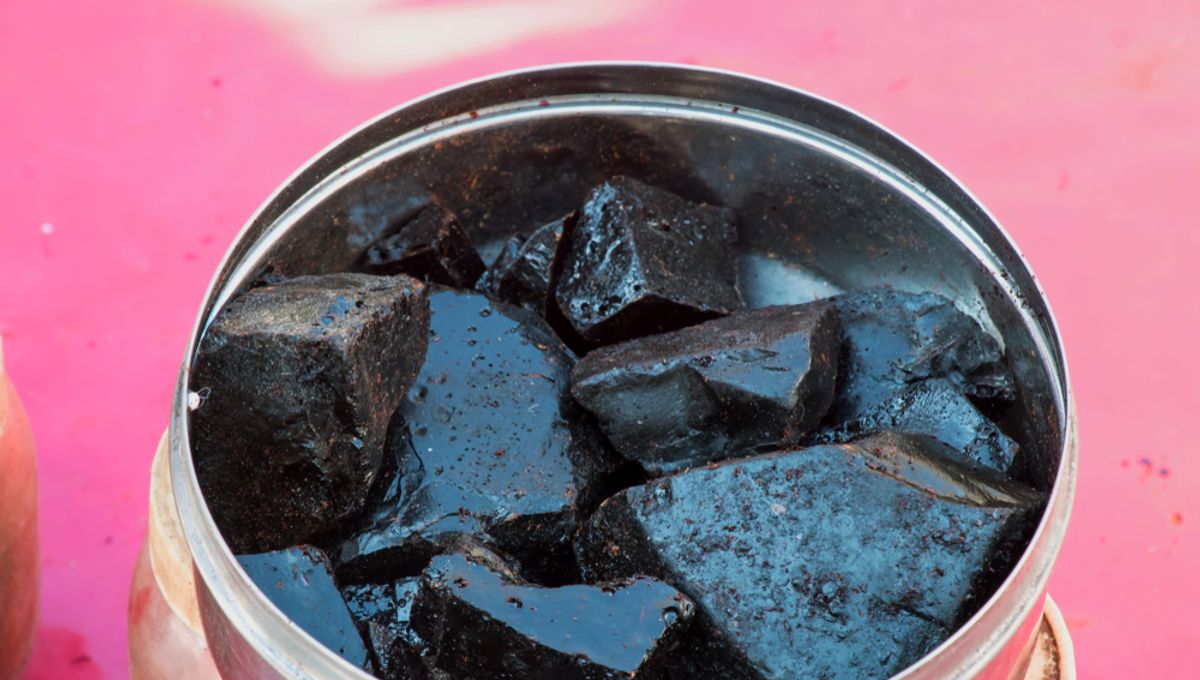
Shilajit is a dark sticky substance that has been used in traditional medicine for thousands of years. While there’s a lack of evidence-based scientific studies on this tar-like goo, some modern research has hinted that some of its purported benefits may have an element of truth.
What is shilajit made of?
The “herbomineral” substance comes from high mountain rock, typically in the Himalayas and Tibet Mountains, although it can also be sourced from a number of high-altitude locations in Asia and South America.
It’s created by the gradual breakdown of plants and organic matter by microbes over long periods of time.
It’s extremely rich in dozens of minerals, most notably fulvic acid, which is said to be its main active ingredient. Fulvic acid is created by the extremely slow breakdown of organic matter and can be found in clay, sand, peat, mountain rocks, and mud.
Translations differ, but shilajit is said to mean “the destroyer of weakness” or “conqueror of the rocks” in the ancient language of Sanskrit. It also goes under a number of different names depending on where you are in the world, most notably Mumijo.
Shilajit is very dark brown, verging on black, and is highly viscous like tar or resin. However, it is water soluble and is often consumed after being mixed into water.
It’s commonly linked with Ayurveda, an ancient healing system that originated in India, although there are also accounts of its use by ancient Greek, Roman, Chinese, and Central Asian doctors. According to legend, Alexander the Great used “mountain tears” – believed by some to be shilajit – to heal war wounds during his expedition in India.
What is shilajit used for?
There are anecdotal claims that shilajit can be used for a myriad of purposes, most notably increasing “energy lives” and improving longevity. As for scientific studies, there are few that suggest it holds promise for certain health concerns. However, many of these studies are on the small side or have only been carried out on lab animals, meaning their findings should be treated with caution.
It’s sometimes promoted as a potent aphrodisiac. While there are no direct studies on this, other research has indicated it could be used to treat low testosterone levels. In a study of 96 healthy men aged 45 to 55, half were given a placebo while the other half were given 250 milligrams of purified shilajit twice a day. After 90 days, the participants who consumed the purified shilajit had significantly higher testosterone levels compared to the placebo group.
In another study, 60 men with fertility issues took shilajit twice a day for 90 days after meals. After 90 days of treatment, more than 60 percent of the participants showed an increase in total sperm count, while sperm motility had increased by 12 percent.
One team of scientists looked at whether shilajit could be used in the treatment of Alzheimer’s disease, citing its “potential procognitive” properties. They put forward evidence that shilajit helped the brain cells of rats to grow in a petri dish. Furthermore, they argued that the substance might hold certain properties that stop the build-up of tau proteins, thought to be the direct cause of Alzheimer’s and other neurodegenerative disorders. However, that is a bold claim which needs more evidence.
Shilajit is sometimes touted as a remedy for tiredness and lethargy, so one study of 63 active men investigated whether it could help “fatigue-induced decreases in muscular strength.” Their findings concluded that those who took the supplement were less tired and did have better retention of maximal muscular strength.
The good news is that shilajit is widely considered to be safe and has minimal side effects. It is important, however, that the shilajit is not raw and has been processed as it can be contaminated with unwanted byproducts, like pathogens and heavy metals. Likewise, it is possible to be allergic to the substance, so you should only take it after speaking with a doctor.
All “explainer” articles are confirmed by fact checkers to be correct at time of publishing. Text, images, and links may be edited, removed, or added to at a later date to keep information current.
The content of this article is not intended to be a substitute for professional medical advice, diagnosis, or treatment. Always seek the advice of qualified health providers with questions you may have regarding medical conditions.
Source Link: Some Think Shilajit Is An "Elixir Of Life," But What Does The Science Say?